New Platforms for P2P Lending: A Revolution in Modern Finance
Explore the latest P2P lending platforms changing how borrowers and investors connect, with innovative tech and decentralized finance.
P2P lending is evolving fast!
Peer-to-peer (P2P) lending has transformed how people access credit and invest money. Once dominated by a few large players, the P2P space is now booming with new platforms offering fresh opportunities and smarter tools.
This expansion is driven by technology, rising distrust in traditional banks, and a growing appetite for financial inclusion. As the digital world expands, so does the potential for decentralized, person-to-person finance.
Let’s take a closer look at the new wave of P2P lending platforms and what makes them stand out.

A New Breed of Platforms
The latest generation of P2P lending platforms is focused on user experience, transparency, and accessibility. Unlike early platforms, which operated more like digital banks, the newcomers leverage automation and blockchain to streamline everything.
Smart contracts, instant verification, and mobile-first interfaces are now the norm. This makes it easier for both lenders and borrowers to engage without complicated paperwork or middlemen.
Security is also a top priority. Many of these platforms use advanced encryption and decentralized storage to protect user data.
Decentralized Finance (DeFi) Enters the Chat
Decentralized finance, or DeFi, has started to reshape P2P lending. Platforms like Aave, Compound, and JustLend offer crypto-based lending systems without traditional intermediaries.
Instead of relying on banks or credit scores, DeFi platforms use smart contracts and collateral in cryptocurrencies.
This opens lending access to people in countries with weak banking systems or limited financial infrastructure. However, DeFi platforms come with risk. Crypto volatility and technical complexity
Niche Platforms Are Gaining Ground
Not all new P2P platforms aim to be one-size-fits-all. Some focus on specific communities, sectors, or types of borrowers.
Examples include platforms tailored to small business loans, green energy projects, or student financing. These niche platforms appeal to investors interested in impact lending or supporting certain causes.
By narrowing their focus, these platforms can provide more accurate risk assessments and customized support.
AI and Risk Assessment
Another trend among new P2P platforms is the use of artificial intelligence for credit evaluation. Rather than depending solely on traditional credit scores, AI models analyze alternative data.
This could include payment history from utility bills, mobile usage, or even social behavior. It gives a more complete picture of a borrower’s reliability.
For lenders, this means better predictions of default risk and higher potential returns.
Mobile-First and Global Access
In many emerging markets, people access the internet almost exclusively through smartphones. Recognizing this, several new P2P platforms are designed mobile-first.
Apps like Tala and Branch allow users to apply for microloans directly from their phones with minimal friction. These platforms often serve the underbanked—people with limited or no access to traditional financial services.
This approach helps unlock credit for millions while offering returns for investors in stable regions.
Regulation and Compliance Challenges
With rapid growth comes tighter scrutiny. Governments are starting to regulate newer P2P platforms more closely, especially those involved in DeFi or cross-border lending.
Licensing, KYC (Know Your Customer) procedures, and data protection rules vary widely. Platforms must adapt fast or risk shutdown.
Still, clear regulation can help build trust, especially for risk-averse investors.
What It Means for Investors
For investors, these platforms open new opportunities beyond stocks and bonds. P2P lending can offer higher returns, portfolio diversification, and the ability to support causes that matter.
But like all investments, it carries risks. Default rates, economic downturns, and platform failure are real concerns.
It’s crucial to research platforms thoroughly, diversify your loans, and stay informed about changes in the space.
Borrowers Are Winning Too
Access to fast, affordable loans can be life-changing. New P2P platforms are helping students pay tuition, entrepreneurs launch startups, and families cover emergencies—often with lower interest rates than banks.
For many borrowers, the simplicity and speed of these platforms beat standing in line at a bank.
Conclusion
New platforms for P2P lending are unlocking financial possibilities for millions. They blend technology, inclusivity, and innovation to reshape how we borrow and invest.
From AI to DeFi, mobile apps to niche networks, the future of P2P lending is more diverse and accessible than ever.
As the space continues to grow, expect even more creative models that challenge traditional finance—and invite everyone to participate.







